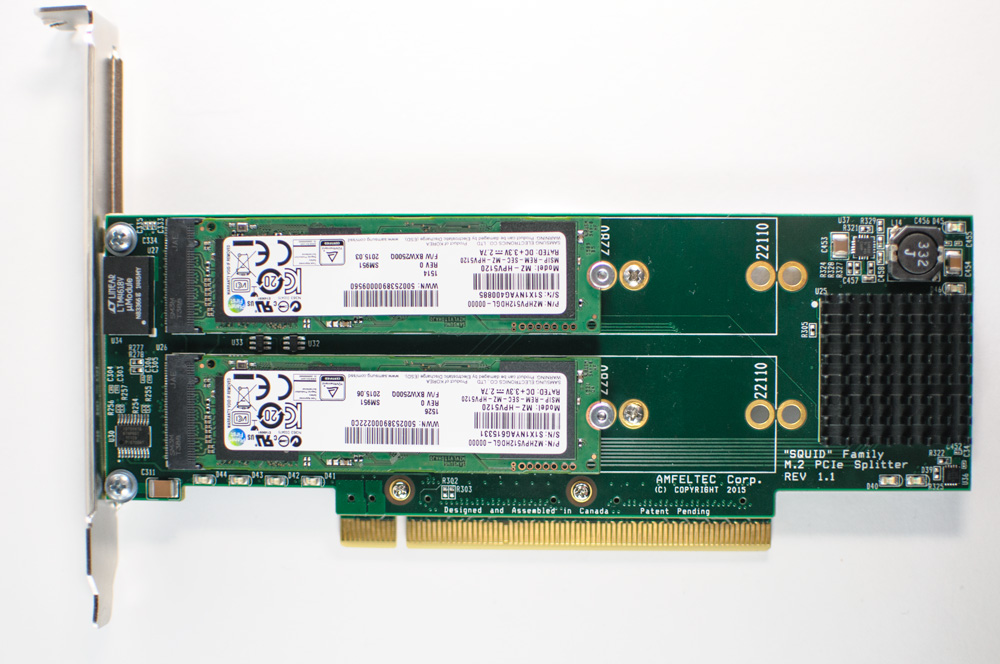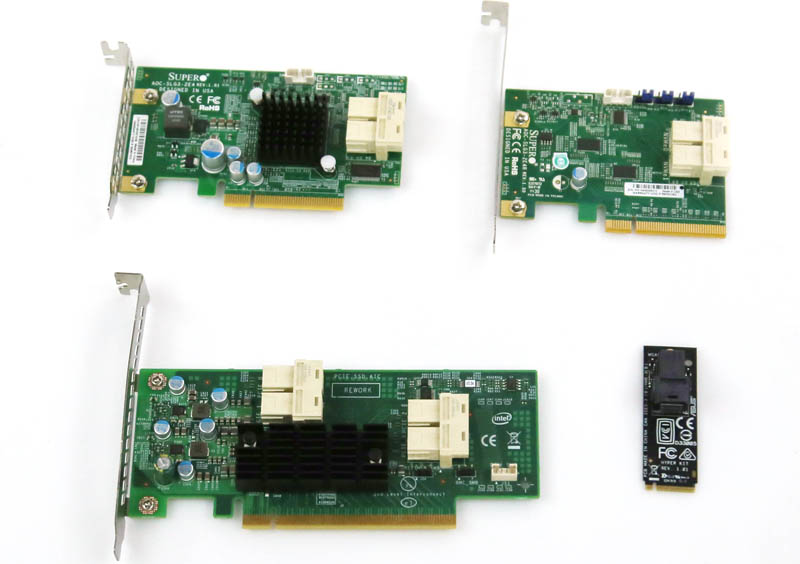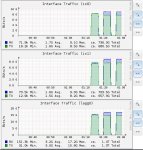I'm in the process of repurposing some hardware and building two identical machines for ZFS based storage and need some advice regarding SLOG/L2ARC disc choice and layout. Intended use is NFS based vSphere storage for medium load VM's.
vpshere Cluster consists of 15 dual cpu hosts connected via dual port intel x520-DA2 card to arista switches.
1st the hardware allready available :
As I have no experience with multiple drives for both SLOG and L2ARC, I'm looking for advice. For SLOG drives I was thinking about 2 to 4 Intel S3710 200GB drives, and for L2ARC I have a lot of 240 GB Samsung SM863 drives available.
What about layout? Can anyone advise? I have 14 drive slots spread over both controllers equally available to support SLOG and L2ARC drives. Before I go out and buy the wrong SSD's or the wrong amount for the wrong layout I could use some help.
vpshere Cluster consists of 15 dual cpu hosts connected via dual port intel x520-DA2 card to arista switches.
1st the hardware allready available :
- Supermicro 2U 219A-R920WB Chassis (16x 2.5'' drive bays)
- Supermicro X9DRW-iTPF+ Motherboard
- 2x Intel Xeon E5-2680 2.7Ghz (3.5Ghz Turbo) 8 Core (16 Thread) Processors
- 128GB DDR3 ECC Registered Server Memory (8*16GB PC3L-10600R)
- 2*LSI 9200-8i
- 1* LSI 9200-8e
- Integrated Dual Port Intel i350 1Gbps Ethernet Ports
- Integrated Dual Port Intel 82599 (Same as X520) 10Gbps SFP+ Ports
- Dual Redundant Platinum efficient 920W PSUs
- 2* IBM exp2524 external chassis connected to the LSI 9200-8e each on one port, containing 24 10K RPM SAS drives, so a total of 48 drives.
As I have no experience with multiple drives for both SLOG and L2ARC, I'm looking for advice. For SLOG drives I was thinking about 2 to 4 Intel S3710 200GB drives, and for L2ARC I have a lot of 240 GB Samsung SM863 drives available.
What about layout? Can anyone advise? I have 14 drive slots spread over both controllers equally available to support SLOG and L2ARC drives. Before I go out and buy the wrong SSD's or the wrong amount for the wrong layout I could use some help.












